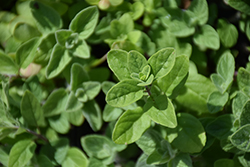Fri & Sat 8am - 8pm
Sun 8am - 7pm
Anytown, USA 12345
fax: 261.787.0463
e-mail: info@successgc.com


Plant Finder

Height: 18 inches
Spacing: 16 inches
Sunlight:
![]()
Hardiness Zone: 8b
Other Names: Lebanese Oregano, Za'atar, Bible Hyssop
Description:
A culinary herb that is also quite ornamental; arching flower spikes in summer, over aromatic foliage; excellent mid to late season color for a rock garden or border front
Edible Qualities
Syrian Oregano is a perennial herb that is typically grown for its edible qualities, although it does have ornamental merits as well. The fragrant oval bluish-green leaves are usually harvested from late spring to early summer. The leaves have a zesty taste and a distinctive fragrance.
The leaves are most often used in the following ways:
- Fresh Eating
- Cooking
- Seasoning
Features & Attributes
Syrian Oregano features showy nodding white flowers with shell pink overtones and shell pink bracts at the ends of the stems in mid summer. The flowers are excellent for cutting. Its attractive small fragrant oval leaves remain bluish-green in color throughout the season. The brick red stems can be quite attractive.
This is an herbaceous perennial herb with a shapely form and gracefully arching stems. Its relatively fine texture sets it apart from other garden plants with less refined foliage. This is a relatively low maintenance plant, and should be cut back in late fall in preparation for winter. It is a good choice for attracting butterflies to your yard, but is not particularly attractive to deer who tend to leave it alone in favor of tastier treats. It has no significant negative characteristics.
Aside from its primary use as an edible, Syrian Oregano is sutiable for the following landscape applications;
- Rock/Alpine Gardens
- Border Edging
- General Garden Use
- Herb Gardens
- Container Planting
Planting & Growing
Syrian Oregano will grow to be about 18 inches tall at maturity, with a spread of 20 inches. When grown in masses or used as a bedding plant, individual plants should be spaced approximately 16 inches apart. Its foliage tends to remain dense right to the ground, not requiring facer plants in front. It grows at a fast rate, and under ideal conditions can be expected to live for approximately 5 years. As an herbaceous perennial, this plant will usually die back to the crown each winter, and will regrow from the base each spring. Be careful not to disturb the crown in late winter when it may not be readily seen!
This plant is quite ornamental as well as edible, and is as much at home in a landscape or flower garden as it is in a designated herb garden. It should only be grown in full sunlight. It prefers dry to average moisture levels with very well-drained soil, and will often die in standing water. It is considered to be drought-tolerant, and thus makes an ideal choice for a low-water garden or xeriscape application. This plant should not require much in the way of fertilizing once established, although it may appreciate a shot of general-purpose fertilizer from time to time early in the growing season. It is not particular as to soil type or pH. It is somewhat tolerant of urban pollution. This species is not originally from North America. It can be propagated by division.
Syrian Oregano is a good choice for the edible garden, but it is also well-suited for use in outdoor pots and containers. It is often used as a 'filler' in the 'spiller-thriller-filler' container combination, providing a mass of flowers and foliage against which the thriller plants stand out. Note that when growing plants in outdoor containers and baskets, they may require more frequent waterings than they would in the yard or garden.
